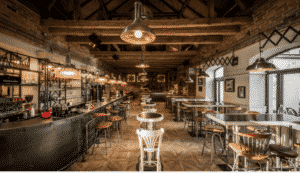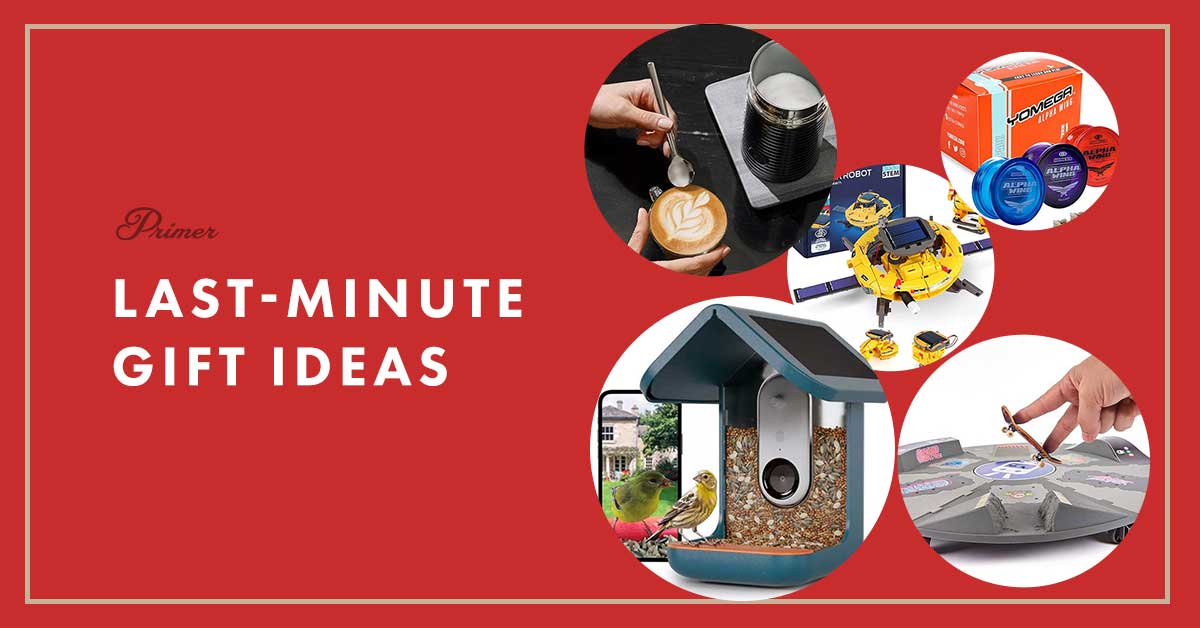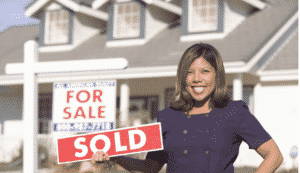While your menu is the restaurantís main appeal, it isnít the only item to help you sell more and generate repeat clients. Your restaurantís design and decor will also impact, and the significance of restaurant interior design cannot be...

While your menu is the restaurantís main appeal, it isnít the only item to help you sell more and generate repeat clients.
Your restaurantís design and decor will also impact, and the significance of restaurant interior design cannot be overstated. Even eight years back, customers agreed that interior design influences their dining experience with a restaurant.
Weíll go over a few restaurant design tips that you can implement to attract more clients and strengthen their loyalty.
Try these restaurant interior design ideas to increase sales.
1. First, decide on a concept, style, and theme.
Start with the idea and work your way through to the decoration if youíre just getting started. For example, red and white checkered tablecloths and rustic walls are likely to be seen in a classic Italian restaurant design concept. Chinese restaurant design concepts, on the other hand, may highlight simplicity, minimalism, and exotic elements. Cafe design trends can range from art deco to modernism. You can also choose unique themes, such as a dog cafe, a comic-themed cafe, or a cafe that serves as a book shop. The sky is the limit when it comes to restaurant interior design concepts. Just keep in mind that before you begin designing your restaurant or cafe, you must first decide what you want it to be.2. Make a statement with a striking entrance.
If you rely on foot traffic as your primary source of revenue, youíll need to find a way to attract them inside. What better way to do it than with a one-of-a-kind restaurant entrance design? Use these restaurant faÁade design ideas to make your restaurant entry doors stand out: Display your restaurantís name on a neon sign. Surround the entrance with mural Customers can glimpse the interior through the all-glass doors and windows. For a seafood restaurant, an unusually shaped entrance, such as a shell door. Colors that pop against the backdrop of the neighborhood. A handful of outdoor tables with a traditional canopy.3. Choose your colors carefully.
Colors may be used to portray a wide range of emotions. Weíre not claiming that by applying color psychology, youíll be able to persuade customers to order more. Still, it canít hurt to try to steer them in the right direction, can it?† Red, brown, green, orange, yellow, blue, and purple are the best colors for restaurant walls. These may appear to be all the colors, but how you utilize them and in what combinations is crucial.† Warm earth tones like browns or rich reds would work well in a fine dining restaurant design. You want to encourage your clients to unwind, remain as long as they like, and purchase additional appetizers, desserts, and drinks.† For a low-budget small restaurant design, utilize white to make the space feel more spacious. Are you looking for the perfect color for the interior design of a fast-food restaurant? The color red is the winner. It makes you feel hungrier, which pushes you to eat on the spur of the moment.4. Concentrate on the layout of your restaurant.
The restaurantís layout is crucial, not only in terms of design but also in functionality. With a compact restaurant plan, you want to make the most of the space you have. So letís begin with the restaurant seating arrangement. Consider the following questions: Do you want to make the restaurant appear spacious, or do you want to create a pleasant ambiance by placing the tables close together? Do you have a bar where some extra seats could be added? Is it going to be a classy and exclusive setting or a social and lively one? Will there be any outside seating available? Do you intend to host huge birthday parties or corporate celebrations? Will you require a waiting room, or will you be providing takeout? Customers will have different expectations from a traditional pizza shop design layout than a fine dining restaurant layout. For example, a pizza shop is more casual and easygoing; thus, communal tables or restaurant-style booths are options. On the other hand, a fine dining restaurant places a greater emphasis on seclusion and far apart tables. A sports bar floor plan plays by different rules (nice wordplay, right?). Youíll need to make the TV the focal point of the room, showcase sports memorabilia, and include games like foosball, darts, or pool. When it comes to restaurant kitchen layout design, the goal is to maximize efficiency, and the workflow should function as smoothly as though it were a well-oiled machine. Usually, this takes place behind closed doors, but the open restaurant kitchen concept has recently gained favor. Give it a shot if you want to show your guests how their food is prepared, which might be a unique restaurant concept in and of itself. If your restaurant has a bar, but you want the attention to be on the cuisine, consider a simple bar arrangement that wonít detract from the main dining room. The bar should ideally serve only as a waiting space for customers to drink while their meal is being prepared.5. Donít forget about the HVAC system.
While restaurant interior design is more enjoyable, there are also more ďboringĒ restaurant design elements to consider, such as HVAC. Heating, ventilation, and air conditioning (HVAC) are three services that your restaurant should provide. Make sure your customers can cool off in your cool restaurant on hot summer days. Warm their freezing hands with a cup of hot chocolate and sufficient heating on cold winter nights. Not to mention the importance of ventilation in preventing cooking odors from infiltrating the seating area.6. Create a great menu that reflects your companyís image.
The dťcor of a restaurant should not be the only consideration. The design of your restaurantís menu is an essential aspect of its overall architecture, and itís more than just a menu of items you sell.† It demonstrates to customers what your brand is all about, your culinary philosophy, and what you have to offer. As a result, itís critical to have a powerful restaurant logo design that expresses your business identity. Your restaurantís concept should be reflected in your menu. Use current typefaces if youíre focusing on modern restaurant design. An extensive one-page menu printed on high-quality paper might benefit a modern restaurantís design. If you own a quick food restaurant, use pictures on your menu, but not so much if you own a nice dining establishment. Keep in mind that your physical menu will not (and should not) match the digital menu youíve posted on your website. The one on your website should have images of each meal, which helps customers make decisions when purchasing online.7. Make use of light to create ambiance.
One of the most important topics to consider when constructing a restaurant is how you intend to light it. Nothing beats the power of light to set the tone. Consider red lighting while designing the inside of a restaurant to attract as many customers as feasible per day. It acts in a similar way to red paint in that it makes us hungry and speeds up the eating process. Adding candles for diffuse lighting is an interesting restaurant design concept to create a romantic environment. Low lighting in a small restaurant design might help to create a comfortable and intimate feel. Experiment with lighting to return to the fundamentals of restaurant design.8. Create an irresistible scent
Another sensation to consider when looking for restaurant design ideas is the smell. Scented candles can be used for both lighting and fragrance. You donít want the aroma to be too strong, though. Instead, customers should be captivated by the smell of the cuisine when it arrives. Having the fragrance of food cooking from the moment you walk into a restaurant, on the other hand, might be a tremendous turn-off. Thatís why youíll need ventilation to keep unpleasant odors from getting into the seating area. The aroma of freshly ground coffee is sure to attract clients if you manage coffee shops. Consider investing in a coffee maker with a grinder to ensure that the coffee smells and tastes fresh.9. Make a difference with music and ambient sounds.
Itís not just about what we see and smell in a restaurant; itís also about what we hear. So consider how you can use sound to attract consumers when learning how to design a restaurant. Firstly, if youíre going to play music, do so quietly so as not to disturb your customersósecondly, select music that is appropriate for your restaurantís cuisine, concept, and theme. If youíre having a particularly sluggish day or time of day, try playing the ambient sounds of a busy restaurant outside. People passing by may hear it and opt to stop by your place for a bite to eat. Last but not least, playing music in the bathroom makes people feel more at ease than being in complete silence.10. Consider your storage and refrigeration requirements.
While these are regions that your customers will not see, it is critical for your restaurantís efficiency to consider how you will categorize these needs. A tiny restaurantís design may not necessitate a lot of storage space, but it does need simple access so that you donít waste time. Establishing the space needed for restaurant design is essential in constructing a restaurant, but it is not often given the attention it deserves. You donít want your consumers to see your fridge or storage area. Furthermore, if you purchase valuable inventory, such as fine bottles of wine, you must ensure that they have all the necessary security. When it comes to refrigeration, design and function go hand in hand. Depending on how many perishable and frozen things you offer, you may require additional refrigerated space.11. Get rid of any trouble spots.
Getting rid of any trouble spots is one of the most important restaurant design considerations for operating things properly. So what does a problem area mean in the restaurant industry? A location where consumers dislike sitting, such as near the restroom, kitchen, or front door. Put yourself in your customersí shoes when designing the restaurantís decor. First, sit at each table for a few minutes to observe whether anything is bothering you, such as a lack of legroom or a draft of cold air. Then, fix these issues by rearranging the furniture or installing a divider to cover whatever your clients donít want to see.12. Pay attention to the details that matter.
The value of details is emphasized in all great restaurant design concepts. There are several different types of restaurant interior design, each with its own set of features and decorations. If youíre short on space, for example, try these small restaurant decor ideas: Dangling plants† Folding wall tables and bar stools are examples of modern restaurant furniture. Seats built into the wall or window frame seating Tables that are next to one other Shelves built into the wall These can also be used as low-cost restaurant concepts to improve your restaurantís design without breaking the bank. You can use mirrors as eye-catching decorations for a small restaurant, and they reflect light, making the space appear larger. Restaurant wall design is crucial, especially for small venues. Invest in local art and display it on your walls to show that you support local artists. To get you started, here are a few restaurant wall design ideas: Plates that are painted by hand Utensils for eating made of wood Beautiful typography on wall decals. Install vintage photographs in various sorts of frames. Neons in various colors The cuisine also determines decorations. Consider bringing in Indian restaurant decoration items such as traditional tapestries and finely woven rugs if you manage an Indian restaurant. Pay attention to details like the serversí uniforms and the cutlery, in addition to your basic restaurant decoration ideas. Neither must appear shabby or filthy.13. Create a relaxing bathroom environment
While you may be tempted to look for restaurant design recommendations that are solely focused on the restaurant floor, weíre here to tell you that thereís more to it than that. Restaurant designs that create a pleasurable experience are more likely to succeed from beginning to end. Make sure to keep the bathroom immaculate at all times. Of course, it should be clean and odor pleasant, but we recommend going the additional mile and decorating the bathroom as well. Candles, charming mirror frames, lovely decor, or complimentary items such as hand cream can all help.14. Extend your restaurant design concepts to the outside.
A vibrant mural or well-planned outside seating may attract customers into your business before they even enter. The exterior design of a restaurant is an important consideration, and go crazy with the wall art if possible, and your landlord approves the restaurant building design. Invest in a mural that customers want to photograph and share on social media. Not only will you gain additional visibility, but youíll also receive free user-generated content that you can share on your social network accounts.15. Always keep your consumersí expectations in mind.
One of our final restaurant design suggestions is figuring out your target audience and what they might expect from a place like yours. The location is also important because it might influence the decor. When you imagine a French restaurant in Manhattan, canít you already see the beautiful chandelier and luxurious tapestry chairs? Try a modern restaurant kitchen design and some unique decorations if youíre catering to millennials. On the other hand, if your customers want to enjoy a glass of wine while they wait for their table, come up with some tiny restaurant bar design ideas that will make their visit memorable.Final Words
Now that you know how to design a restaurant interior that will woo your clients, itís time to work and use these unique restaurant design recommendations. If youíd like help evaluating ideas that might work best for your restaurant, our team is here to help. Our marketing consultants are experts in your local community and can advise you on what solutions will work best.The post 15 Restaurant Design Ideas That Will Increase Your Customers appeared first on IndoorMedia.












